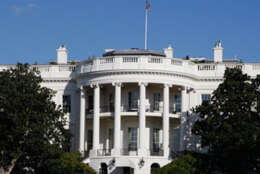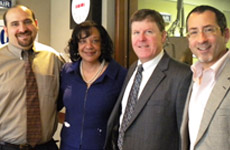Hubbard Radio Washington DC, LLC. All rights reserved. This website is not intended for users located within the European Economic Area.
On Air: Federal News Network
NASA
-
By Jason Miller Executive Editor Federal News Radio SAIC won its second contract under NASA’s multi-billion dollar Information Technology Infrastructure Integration Program (I3P). The space agency announced today that it awarded SAIC a contract to…
March 28, 2011 -
The \"leaders, innovators, and collaborators of the future\" are going head to head in a robotics competition. FIRST DC\'s Herb Muktarian explains why and how.
March 28, 2011 -
While Google ranks as their ideal employer, many college students say they are interested in working for federal agencies.
March 21, 2011 -
Despite a 2006 mandate to secure mobile devices and implement two-factor authentication, only just over half of federal agencies have managed to do so. OMB submits its annual FISMA report to Congress detailing the steps the government has taken to improve cybersecurity, including spending $12 billion on cybersecurity last year.
March 21, 2011 -
GWACs explained by GSA\'s Michael O\'Neill, NIH\'s Mary B. Armstead, and NASA\'s Joanne Woytek
March 18, 2011 -
Chris Kemp, NASA’s chief technology officer for IT, is leaving the agency. Kemp announced his resignation on his agency blog saying, “As budgets kept getting cut and continuing resolutions from Congress continued to make funding unavailable, I saw my vision for the future slowly slip further from my grasp.” Kemp was one of the pioneers [...]
March 17, 2011 -
Chris Kemp made the announcement about his resignation on his blog.
March 15, 2011 -
Federal News Radio surveyed 10 agencies to find out how they are preparing for a shutdown, and how operating under a continuing resolution is affecting their operations.
March 03, 2011 -
A Texas man who admitted hacking into the computer systems of a Minnesota company and NASA\'s Goddard Space Flight Center in Maryland pleaded guilty Wednesday to one count of wire fraud.
February 24, 2011 -
It was a big week for cloud computing on Federal News Radio – from NASA’s Nebula cloud to more information on OMB’s Cloud Computing Strategy. Plus, we learned what budget cuts might mean for the cloud… NASA demos open source cloud computing Hear how NASA is pairing its Nebula platform with open source cloud initiatives [...]
February 22, 2011 -
The agency\'s Nebula platform is just one possibility in the process of incorporating public cloud initiatives across the board.
February 18, 2011 -
NASA Deputy Administrator Lori Garver has been on the road to meet with leaders of commercial space companies. She joins us with details of what she found.
February 14, 2011 -
The proposed rule change would make life a little easier for some contractors.
February 10, 2011 -
NASA is trying to find space voyagers that are lost here on earth.
February 10, 2011







